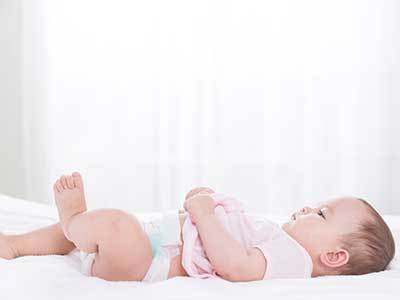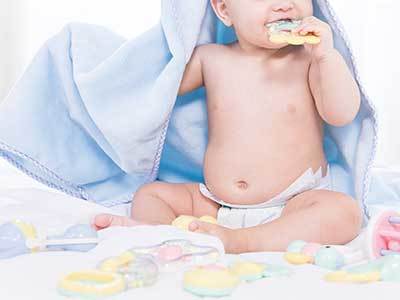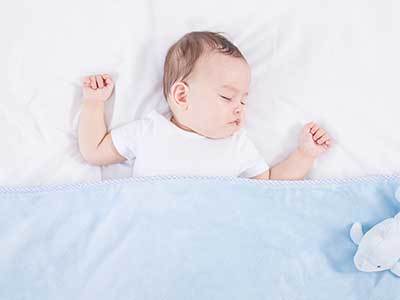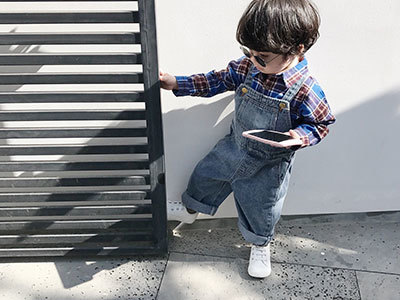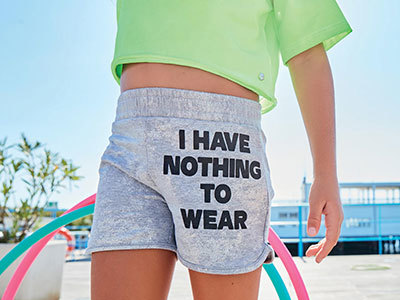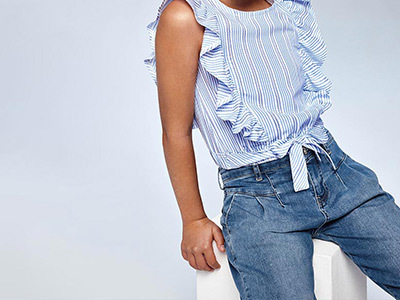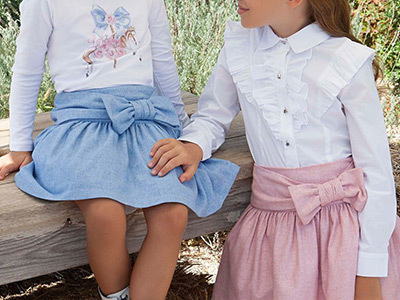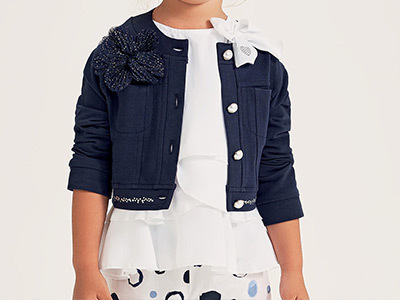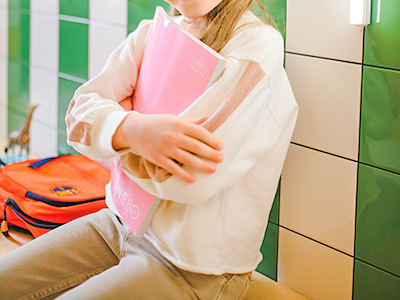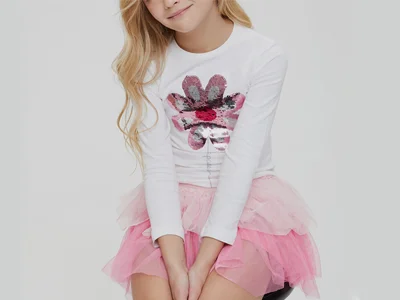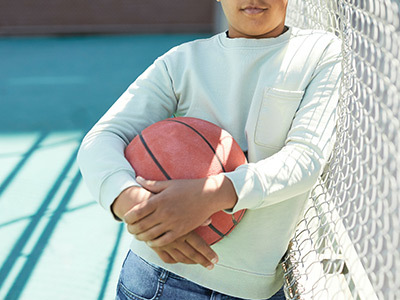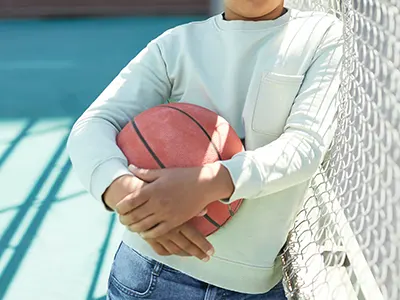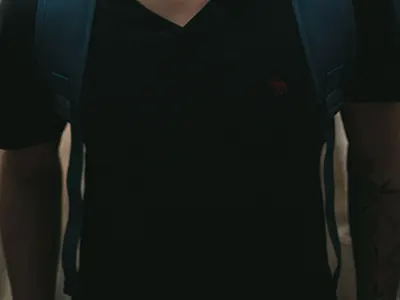Children's clothing should not only focus on appearance, but also pay attention to quality and safety
Published:
2022/06/10
In recent years, the consumption scale of children's clothing in my country has continued to expand, maintaining an annual growth rate of more than 8%. With the liberalization of the two-child policy and consumption upgrades, the market size is expected to exceed 150 billion yuan this year. Especially in the context of the saturation of the adult clothing market and the obvious slowdown in growth, children's clothing has become the largest growth point of the clothing industry. JNBY, Semir and other adult clothing brands have "reverse growth" and started children's clothing, and some brands also hold children's clothing fashion conferences every year.
However, while the market sales continue to increase, children's clothing is not very worry-free in terms of quality and safety. From May to September 2016, the General Administration of Quality Supervision, Inspection and Quarantine organized the quality supervision bureaus of 30 provinces (autonomous regions and municipalities) nationwide to carry out nationwide joint supervision and spot checks on the quality of 16 kinds of products such as children's and infant clothing. The detection rate of unqualified products is between 10% and 20%, which is significantly higher than the overall unqualified rate of product quality national sampling. From January to October 2016, Guangzhou Inspection and Quarantine Bureau inspected a total of 25,000 pieces of unqualified clothing, including 21,000 pieces of infant clothing and children's clothing, accounting for 84%. Some well-known international children's clothing brands have even become "regular customers" on the list of imported unqualified products. These data are also reminding parents that buying children's clothing should not only focus on "looking beautiful", but should pay more attention to quality and safety.
New national standard for children's clothing: higher requirements for fabric quality and safety performance
Judging from the random inspection results announced by the regulatory authorities in recent years, there are two main quality problems in my country's children's clothing products:
First, there are inherent quality problems like adult clothing, such as formaldehyde content, pH value exceeding the standard, containing decomposable carcinogenic aromatic amine dyes that are prohibited by the state, poor color fastness, and fiber content labeling inconsistent with the actual, etc.;
The second is the unique problem of children's clothing, such as small accessories such as bows, buttons, zipper pullers, pom-poms, tassels, decorative glitters, beads, etc. are easy to fall off, and metal accessories such as zippers have sharp edges and burrs. Belt length exceeds standard allowable range.
On June 1, 2016, the first national mandatory standard for children's clothing and school uniforms, GB 31701-2015 "Technical Specifications for Safety of Textile Products for Infants and Children" was officially implemented. The new national standard for children's clothing has made more detailed regulations on the design, physical and chemical safety performance of infant and children's textiles.
In view of the particularity of infants and children, this standard further improves the safety requirements of infants and children's textile products on the basis of the original textile safety standards, and the safety requirements are fully upgraded. In terms of chemical safety requirements, the standard has increased the limit requirements for 6 plasticizers and two heavy metals such as lead and cadmium. In terms of mechanical safety, the standard stipulates in detail the ropes and straps for different parts of children's clothing such as neck, shoulders, and waist. For the first time, safety technical requirements and accessories of children's clothing products (buttons, zippers, ropes, etc.) are included in the mandatory requirements. It is stipulated that no straps are allowed on the head and neck of the clothing for infants and children under the age of 7. The standard also stipulates textile accessories, requiring that accessories should have a certain tensile strength, and there should be no sharp tips and edges. In addition, the standard also increases the requirements for the flame retardant properties of children's clothing fabrics in accordance with the relevant provisions of international standards.
Since the new national standard has greatly improved the quality requirements for children's clothing, enterprises need a certain period of time to complete technological transformation and upgrading. In order to ensure a smooth transition of the market, the new standard has set up a two-year transition period for implementation - from June 1, 2016 to 2018 May 31. That is to say, products produced before June 1, 2016 and meeting the requirements of relevant standards are allowed to continue to be sold in the market, and testing institutions conduct testing in accordance with the standards implemented by the enterprise. From June 1, 2018, all related products on the market must meet the requirements of the new national standard.
Fabric Issues: High color fastness and pH content issues
According to reports from the Central Broadcasting Network, recently, Ms. Qiu, who lives in Licang District, Qingdao, bought a set of children's underwear called "Korean purchasing" for her child under one year old at a children's clothing store. But the child kept crying after wearing it. A closer look showed that the child had a dense rash on his body! Diagnosed by a doctor as contact allergic dermatitis. When Ms. Qiu asked about the cause of the allergy, the doctor said the "culprit" should be the newly bought underwear. After investigation by the regulatory authorities, it was found that the owner admitted that most of these clothes were wholesaled from the Internet, not "overseas purchasing" at all, and belonged to "three no" products.
There is also Ms. Yang, a citizen of Shandong, who has the same troubles as Ms. Qiu. She bought a children's clothing online for her two-year-old child. After receiving the clothes, Ms. Yang felt that the hand felt good, but it had a slight smell. Thinking about washing it and then wearing it will definitely be no problem. But after wearing it for only a few hours, the child developed red spots all over his body. It was confirmed by the hospital that the child was allergic, and the allergen was probably the children's clothing.
On the Internet, many consumers are questioning why the "pure cotton" children's clothes they buy for their children are allergic to them after they wear them. In fact, it is likely that the manufacturer lied when labeling the fabric composition. Liu Chunna, an engineer at China Chamber of Commerce Textile Commodities and Children's Products Quality Supervision and Inspection Center (Shanghai), said that when consumers buy products, it is impossible to determine the composition and content of each fiber with the naked eye. Illegal manufacturers take the opportunity to carry out component fraud. In 2016, the Shanghai Administration for Industry and Commerce organized a random inspection of children's clothing. Among the 110 batches of children's clothing samples, 14 samples falsely marked the fiber content. Among them, a sample of suspenders and a sample of knitted jacket are nominally "100% cotton", but the test results show that the cotton content is only 53.4% and 68.3% respectively.
Experts said that there are five types of problems that are most likely to occur in the quality of children's clothing fabrics, one is excessive chemicals, the other is formaldehyde exceeding the standard, the third is the pH value exceeds the standard range, the fourth is the use of decomposable carcinogenic aromatic amine dyes, and the fifth is insufficient dyeing fastness. . Excessive chemicals may harm children's delicate skin, causing allergies and dermatitis; excessive formaldehyde may damage children's skin and respiratory tract; pH is too high or too low, which can easily lead to allergic dermatitis and other diseases; use can decompose carcinogenic aromatic amines Dyes, which may release aromatic amine compounds, may be a predisposing factor for human lesions; poor color fastness; may harm children's skin. The reason for these problems is that, on the one hand, in order to save costs, enterprises use inferior or even prohibited raw materials and dyes in violation of regulations, and on the other hand, the quality management level of enterprises is not enough, and the control of raw materials is not enough.
Security concerns: lack of attention to detail
If the fabric problem is easy to cause damage to the child's skin, then the safety problem may lead to serious injury or even death of the child. In recent years, similar tragedies have occurred repeatedly——
In 2012, a 5-year-old child in Dongguan, Guangdong, was playing on a slide in a kindergarten when a rope on his jacket and hat got stuck on the slide, strangling his neck, causing suffocation and eventually death.
In 2013, a 3-year-old child in Zhoukou, Henan Province, suffocated to death when the ropes on his sweater hat twisted together while sliding down a slide, causing esophageal reflux.
According to the U.S. Consumer Product Safety Commission, between January 1985 and September 2009, there were 18 fatal and 38 non-fatal incidents involving drawstrings on children's coat necks/hats in the United States. The most common accident scenario is when a child slides down a slide and a button or knot on the drawstring gets caught in a small space or gap at the top of the slide. The stuck places include protruding bolts or the narrow space between the handrail and the slide platform, which is very likely to cause suffocation or even death of the child.
In 2016, the China Consumers Association tested some infant clothing on the market according to the new national standard for children's clothing. The results showed that 40 samples had problems and design defects in appearance and safety. Including problems such as excessively long straps, stretched or tied back straps, and strap designs on the head and neck of infant clothing. "Children are curious, active and have weak safety awareness. If the safety design of children's clothing is not in place, it may lead to tragedy." Wang Baojun, director of the National Textile Products Quality Supervision and Inspection Center, said.
In addition to straps, some small parts on children's clothing look beautiful, but they may also become a source of danger. For children whose intelligence has not yet fully developed, these sequins and beads are very attractive to them, and these things are put into the mouth to "tast it" or put into the nose, ears, etc. After these small parts enter the respiratory tract, they may block the respiratory tract and cause suffocation; after entering the digestive tract, it will cause intestinal obstruction, intestinal expansion, and in severe cases, intestinal perforation, intestinal necrosis, and even life-threatening. In 2016, a 5-year-old boy in Wenzhou, Zhejiang was sent to the hospital because he could not hear. Doctors surgically removed 12 beads with a diameter of only 1.5 mm from his ear.
Experts pointed out that the safety performance of children's clothing is a unique problem of children's clothing, and it has also become the main reason why my country's exported children's clothing products are frequently recalled. First, the external accessories of children's clothing, such as bows, buttons, zipper pullers, decorative flowers and other accessories, are easily swallowed by children, especially infants and young children, resulting in choking or even suffocation. Scratches or stab wounds; third, the rope on the hat or neck is too long, which may cause the child to suffocate because the string is caught in the neck; fourth, the string on the waist or lower part is too long, which may cause the child to trip, Slip and fall, or even get stuck on moving objects such as bus doors, slides, bicycles, etc., and be dragged to cause injury or even death. But at present, many parents do not pay enough attention to this issue, which leads to related painful lessons from time to time.
Suggestions for rights protection Consumers should pay attention to the following 7 issues when purchasing children's clothing:
First, when buying children's clothing, try to buy reputable brands in regular shopping malls or supermarkets.
The second is to see whether there are instructions for use (ie product identification) on the product and its packaging. The label of the regular brand clothing should be marked with the trademark, the Chinese factory name and address, the model and size, the fiber content and percentage of the fabric (including lining and filler), washing instructions or washing logo, and the certificate of conformity (the product should be marked with the quality grade), product standard code and other information, try not to buy clothing without instructions for use.
The third is to look at the safety and technical performance indicators of clothing. The new national standard for children's clothing divides the safety technology categories of children's clothing into three categories: A, B, and C. Category A is the best, category B is the second, and category C is the basic requirement. According to the requirements of national standards, textile products for infants and young children should meet the requirements of category A, children's textile products that directly contact the skin should meet the requirements of category B at least, and children's textile products that do not directly contact the skin should meet the requirements of category C at least. You can choose the appropriate category of children's clothing according to your wearing needs.
Fourth, open the package to check the appearance of the product. Whether there are surface defects that affect the appearance; whether the seams can be pulled off by hand, and whether the stitches are loose; whether the buttons and small decorative items are sewn firmly, etc.; whether there are any pockets (especially denim clothing) Sand wash residue. Try not to buy clothes with sharp objects; try not to buy accessories with sharp edges, metal zippers (preferably plastic zippers to reduce genital clamping accidents).
The fourth is to smell whether the clothing has a pungent odor. If there is a pungent smell, it may be due to high formaldehyde content, try not to buy it.
The fifth is to look at the composition of the fabric. Because children have a strong metabolism and are prone to sweating, they need clothes with better water absorption, otherwise they will be uncomfortable to wear. Compared with pure cotton fabrics, polyester fibers have poor sweat-absorbing ability. Therefore, try to buy children's clothing made of pure cotton fabrics. The fabrics should be light-colored and soft to the touch. Avoid buying baby clothes with coated prints or many small parts.
Sixth, it is necessary to improve the awareness of rights protection. It is better to fill in the product receipt carefully when purchasing, so that when there is a problem with the product, the manufacturer can contact the consumer in time. At the same time, consumers should also keep shopping invoices or vouchers so that they can have evidence to protect their rights and interests when there is a quality problem after purchase.
Seventh, wash children's clothing before buying it, especially close-fitting clothing, try not to wear it directly for children after buying it.
Quality expectations, more comfortable, safer and more assured
Letting children wear comfortable and safe children's clothing is not only the expectation of parents, but also the hope for the transformation and upgrading of the industry. As a domestic mandatory standard for textile products for infants and children, the "Technical Specification for Safety of Textile Products for Infants and Children" fully absorbs and draws on the technical regulations and requirements of developed countries on the safety of textile products for infants and children, and its strictness is equal to or even beyond developed country standards. It is believed that with the implementation of the new national standard for children's clothing, it will bring new impetus to the standardized and healthy development of China's children's clothing industry.
Industry insiders said that the new national standard will bring huge pressure to upgrade the children's clothing industry. They look forward to the fact that production enterprises can organize production in accordance with the new national standard in a down-to-earth manner. At the same time, during the current transition period, the regulatory authorities should continue to make efforts to increase the intensity of random inspections, and promote and urge enterprises to implement the new national standards without compromise.
As parents, the healthy growth of children is the greatest wish. Some parents expect third-party organizations to carry out more quality comparison activities for children's clothing, and tell everyone which products are of better quality in a more intuitive way. Some parents hope to increase the supervision of online sales of children's clothing, clear out the "three noes" products in advance, and do not let consumers get them and return them. Other consumers suggested that more consumers should be organized to visit children's clothing production enterprises and children's clothing testing laboratories, so that everyone can master more knowledge of children's clothing consumption.
In order to publicize the new national standard of children's clothing and mobilize social forces to jointly promote the quality improvement of children's clothing, the General Administration of Quality Supervision, Inspection and Quarantine and local quality inspection departments have successively organized the theme activity of "Let Health Enter the Campus" children's clothing quality knowledge, focusing on the theme of children's clothing safety and health, through experts. A series of lively and interesting activities, such as demonstrations, quizzes, online children's clothing creative design competitions, and interactive displays, directly publicize the knowledge of children's clothing safety consumption for students, teachers and parents, explain the harm of inferior children's clothing products to health, and help the majority of students to establish Awareness of safe attire. Teachers and classmates welcome such quality lectures, and they also look forward to spreading the knowledge of children's clothing safety to more classmates through richer and more interesting forms.
keywords



